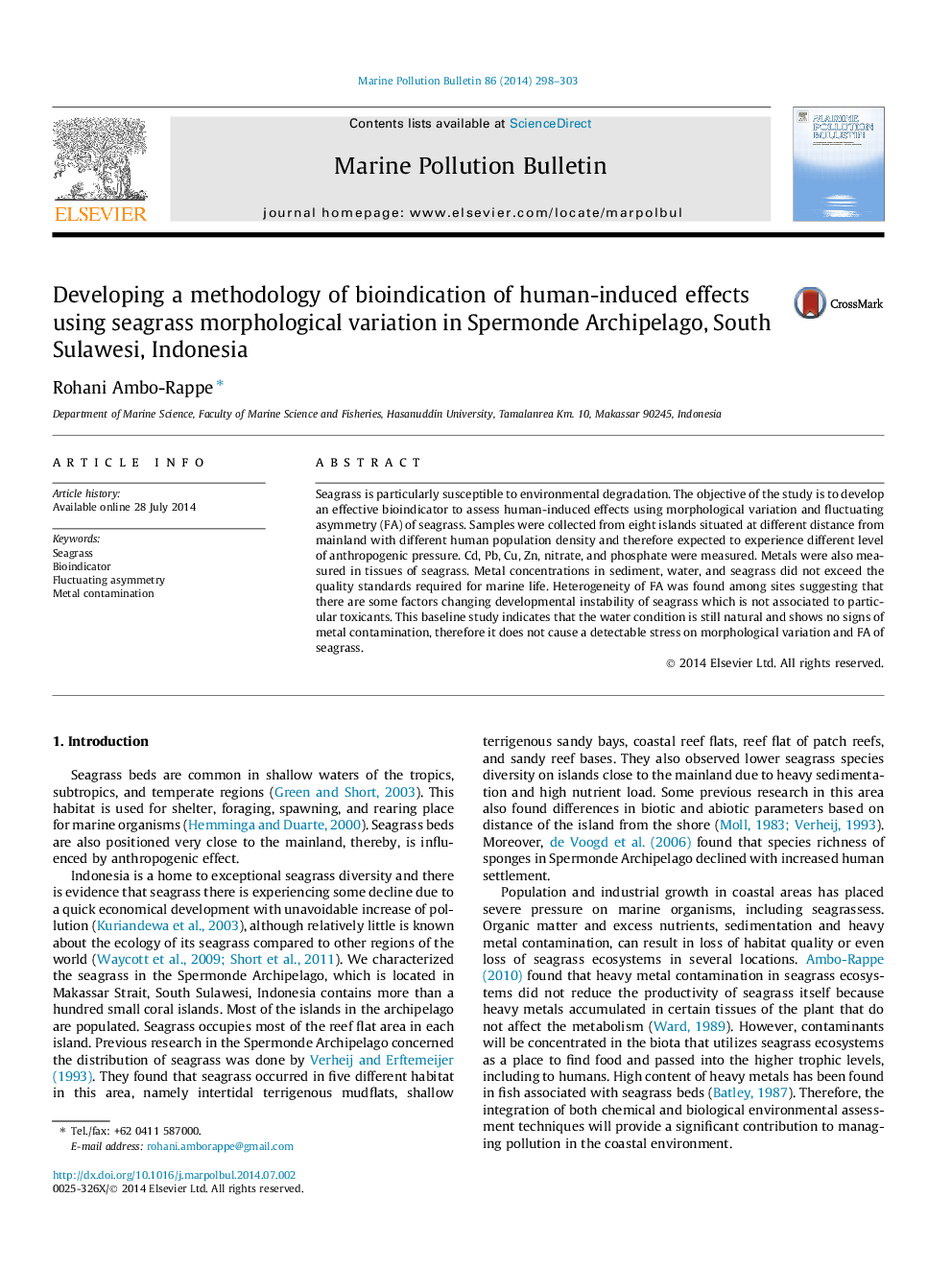| Article ID | Journal | Published Year | Pages | File Type |
|---|---|---|---|---|
| 6357756 | Marine Pollution Bulletin | 2014 | 6 Pages |
â¢We develop bioindicator of marine health using morphological variation of seagrass.â¢Concentration of metals in environment and seagrass are within acceptable level.â¢Variation in morphology of seagrass is not associated to particular toxicants.â¢This study is a baseline characterizing comparatively undisturbed ecosystem.
Seagrass is particularly susceptible to environmental degradation. The objective of the study is to develop an effective bioindicator to assess human-induced effects using morphological variation and fluctuating asymmetry (FA) of seagrass. Samples were collected from eight islands situated at different distance from mainland with different human population density and therefore expected to experience different level of anthropogenic pressure. Cd, Pb, Cu, Zn, nitrate, and phosphate were measured. Metals were also measured in tissues of seagrass. Metal concentrations in sediment, water, and seagrass did not exceed the quality standards required for marine life. Heterogeneity of FA was found among sites suggesting that there are some factors changing developmental instability of seagrass which is not associated to particular toxicants. This baseline study indicates that the water condition is still natural and shows no signs of metal contamination, therefore it does not cause a detectable stress on morphological variation and FA of seagrass.
